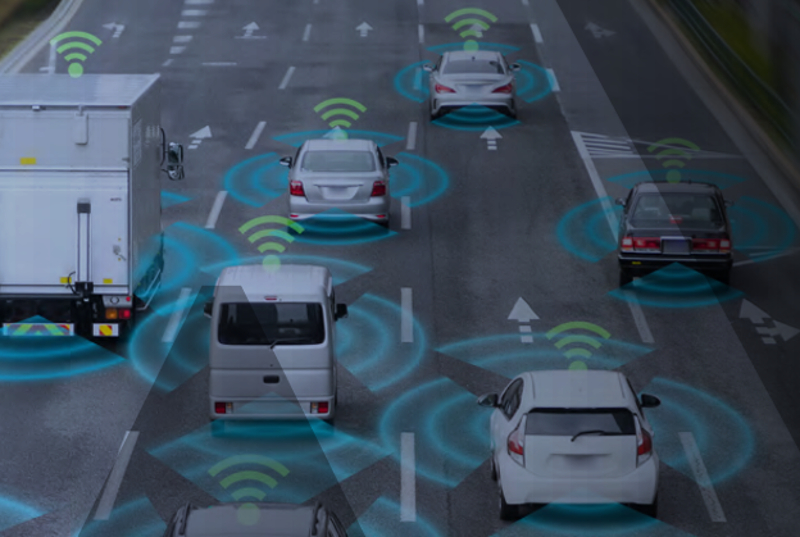
This is one of the findings of a survey carried out by OnePoll for Thales, which found 57 per cent of poll participants fearing for their safety in an autonomous vehicle (AV).
UK government has ambitions to see fully self-driving vehicles on UK roads by 2021 and is helping industry on the road to autonomy by backing numerous consortia, including MERGE Greenwich, which looked at how autonomous ride-sharing could work with London’s transport network.
The 2017 project was led by the Addison Lee Group, which then partnered with Oxbotica with the aim of bringing autonomous ride sharing to the capital by 2021. In 2018 the partners said they’d realise this ambition by creating detailed, digital maps of over 250,000 miles of public roads in and around London to record the position of every kerb, road sign, landmark and traffic light in preparation for the deployment of autonomous cars.
Connected and autonomous vehicles (CAV) and CAV-related technologies are estimated by the Transport Systems Catapult to be worth as much as £57bn to Britain’s car industry by 2035. Those technologies will need end users and a portion of that demographic indicates that it won’t be rushing to use them in 2021.
OnePoll’s survey of 2,000 UK adults found that 23 per cent feel apprehensive about the prospect of self-driving cars on the roads by 2021, and a fifth felt fearful. Only 12 per cent felt excited or optimistic, followed by 16 per cent who agreed they would feel safe in a self-driving car.
The biggest concern among those polled was that of pedestrian safety (53 per cent), followed by the safety of the passengers (51 per cent); a rise in potentially fatal accidents (49 per cent); connectivity failures (35 per cent); then cyber-attacks and hacks on personal data (29 per cent).
Changing minds
With such a big financial carrot dangling from the autonomous stick, how can the public be persuaded to embrace vehicle autonomy? The answer might be several thousand feet up in the air, where 65 per of respondents feel safe in an aeroplane.
Pilots undergo rigorous testing and training, with the use of simulation, to ensure flight safety. Back on the ground, learner drivers take an average of 45 hours to qualify for a driving license. By contrast, an AV can be put through unlimited scenarios via simulation to ensure the vehicle is as safe as reasonably possible.
Dr Alvin Wilby, VP of Research, Innovation and Technology at Thales UK said, “For the government’s 2021 vision to become a reality, autonomous cars must not only ‘be’ safe, but also be perceived as safe by the public. By drawing on synthetic environment technologies – currently used for full flight simulators in aerospace and vehicle simulators – we can subject autonomous driving systems to huge numbers of scenarios, to gain confidence in their safety.”
Kirsty Lloyd-Jukes is the CEO of Latent Logic, a company that describes itself as building realistic AI-based human behaviour models, using a machine learning technique called Imitation Learning to enable scalable, fast, robust, and safe testing of Autonomous Vehicles.
Her company is involved in OmniCAV, a world-first, DfT funded project that is working toward building a proof-of-concept for certifying self-driving cars.
OmniCAV uses highly detailed road maps, plus traffic management, accident and CCTV data, to create a high-fidelity simulation environment, including AI-trained simulated road users to test autonomous vehicles. Outcomes include providing safety assurances to the public and insurers.
Lloyd-Jukes was a panellist at a Thales round table event hosted on January 25, 2019, which was attended also by representatives from OmniCAV partners WMG, University of Warwick, and XPI Simulation.
Timothy Coley, product specialist at XPI Simulation, said that the route to safety approval is not clear, but that there is a clear use-case for the application of simulation in order to accelerate testing for autonomous vehicle development.
Coley said: “If I can create a virtual environment that has all the richness of the real-world and the different proving entities within it – different road lay outs, different… weather conditions the AV would be expected to encounter - then I can start to create scenarios for that autonomous vehicle in order to find out how it’s going to behave in those conditions.
“As long as there’s a good level of validity between what I do in the virtual world and the real world I can start to build my confidence that the autonomous vehicle is going to behave safely and correctly,” he added.
“Simulation gives you the ability to start doing some of that testing earlier on in the design cycle and at a much greater scale than it would be possible… in the real world, and because it’s an immersion environment it's completely safe as well. You can conduct tests as many times as necessary in order to gather the evidence you might require.”
Highlighting the value of collaboration, Prof Jennings, lead for Intelligent Vehicle research at WMG added: “There is potentially a lot that can be learned from other sectors when it comes to certifying the safety of AVs. For example, by using AI to run simulations of real-life scenarios, we might learn more quickly how driverless cars will operate across the UK’s challenging urban and rural road networks, and to ensure that they safely interact with other road users”.
Thales’ report can be found here: Making driving as safe as flying in an autonomous world.











Emergency law passed to protect UK steelmaking
<b>(:-))</b> Gareth Stace as director general of trade body UK Steel, is obviously an expert on blast furnace technology & operation. Gareth...